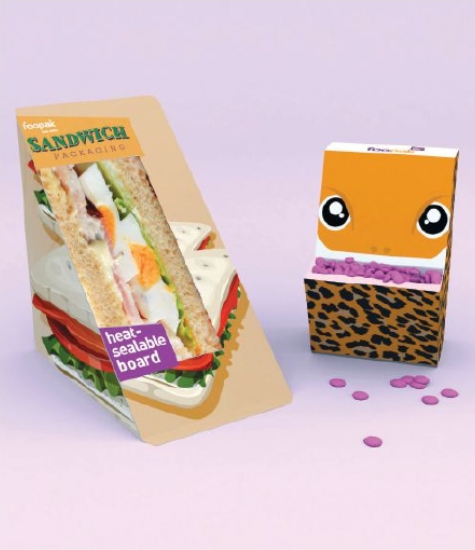
Features
Printing
How the bioeconomy is reshaping food delivery
Rising consumer demand for sustainable packaging is closing the loop on the bioeconomy.
April 14, 2020 By Ian Lifshitz

Getting meals delivered has never been easier and Canadians ordered $4.3 billion worth of meals in 2018 alone. A large portion of that, $1 billion, was through meal delivery apps. According to Ipsos Foodservice Monitor, this number is only poised to grow. Statistics Canada determined that the restaurant-to-consumer delivery segment, which is the largest segment in the online food delivery space, has a market volume of US$1.35 billion in 2019. Just the online food delivery market was pegged at US$2 billion in 2019 and expected to grow to nearly US$3 billion by 2023.
So, what does the food delivery business have to do with the print and paper industry?
With more food deliveries comes more packaging and the need to ensure that businesses and consumers are able to get serviced with sustainable options. As consumer demand for sustainable products continues to rise, businesses are adapting their supply chains and processes to ensure that they provide sustainable, recyclable and fully compostable solutions.
From Earth to Earth
A keyword here is the “bio-circular” economy. The circular economy is defined as products, materials or resources maintained within the economy with limited produced waste such as recycled cups. The bioeconomy encompasses production of renewable biological materials and the conversion of these resources and waste streams into value-added products, such as biofuels.
By closing the loop, the bio-circular economy is combining sustainable product development, compostable and recycled materials and production processes, resulting in sustainable solutions.
When it comes to sustainable packaging development, three areas close the loop. The first being in forestry with the use of renewable fibres, natural fertilizers and the underbrush, while having a positive impact on the communities affected in the forested areas. The second is the use of biofuels and clean energy in mill operations. Lastly, the concept of earth-toearth product development. This results in a fully closed bio-circular economy with products that are completely sustainable, compostable and recyclable.
The need of the hour
As the need for more sustainable, compostable and recyclable packaging increases, businesses are responding to rising consumer demand by ensuring that their packages meet these standards.
For food delivery and take out experiences, which are increasingly being viewed as an extension of the restaurant, the packaging has to deliver the best out-ofstore experience. Additionally, packaging plays multiple functions including preserving food quality; protection from contamination; providing customer convenience; it forms an extension of the brand’s personality; and, most importantly, reinforces the brand’s commitment to sustainability.
Responding to this growing consumer demand and through research, Asia Pulp & Paper Canada developed the Bio Natura Foopak and Paper straw line of products, which replace plastic, foam, and PE-coated food packaging with fully sustainable, compostable, recyclable, re-pulpable, lightweight virgin paper alternatives. Launched earlier this year in Canada, the suite of products is available for both hot and cold food and beverages, as well as other food packaging uses.
Foopak Bio Natura is a fully commercialized and award-winning virgin paperboard product family, which includes multi-use cups and containers. Paper straw is a combination of three layers of high performance Enza Kraft paper; uniquely formulated to provide superior strength, performance, and run-ability for straws.
Sustainable profit meets sustainable purpose
As businesses and establishments look for sustainable product offerings, they will witness their own enterprises flourish. Consumers want to purchase from companies that meet sustainable goals and incorporate sustainability as the foundation of their business. By ensuring that a brand is taking every measure possible across its supply chain and ensuring sustainable product offerings, the impact in the long run will be increased profits.
In fact, in May of this year, Bioindustrial Innovation Canada (BIC) proposed the first national Bioeconomy Strategy for Canada, reflecting the views of more than 400 industry representatives from across the country. The strategy recommended action in four key areas: creating agile regulation and government policy, establishing biomass supply and stewardship, building strong companies and value chains, and building strong sustainable innovation ecosystems.
So the push is right here at our doorstep, and companies that are leading the way in developing sustainable products and solutions will find themselves at the helm of the growth story.
Ian Lifshitz is vice-president of sustainability and stakeholder relations at Asia Pulp & Paper Canada.
Print this page